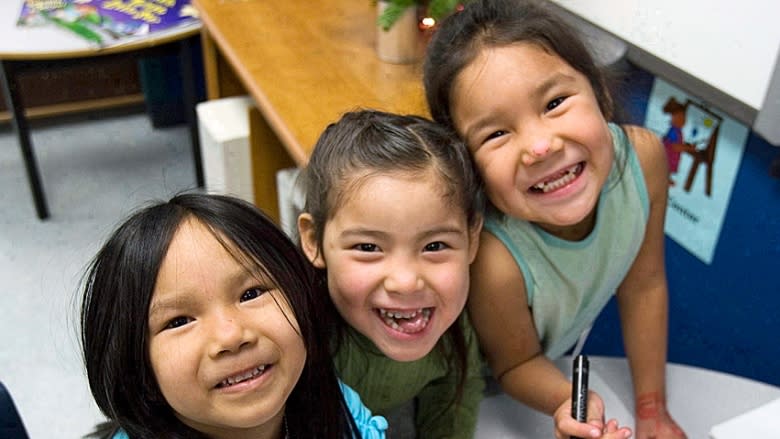Aboriginal economic development report shows little progress
The gaps between aboriginal people and the rest of Canada are not closing, and are widening in some cases, according to a report by a federally created group.
While some progress has been made, aboriginal people are not on track to achieve parity with the rest of Canadians by 2022 — the target date set by the board to close the gaps, the National Aboriginal Economic Development Board (NAEDB) found.
The report makes eight recommendations, many focusing on employment and skills training, and business development, rather than more social spending.
- Analysis | First Nations education needs fresh ideas, leaders say
According to the report, the most striking trend is that First Nations on reserve had the worst economic outcomes for nearly all indicators, while Métis and Inuit have done slightly better, particularly in employment rates.
"What I always look at is the standard of living, which comes down to having a job," Osoyoos Chief and NAEDB chair Clarence Louie said in an interview with CBC News.
"The unemployment rates of our people and the amount of funding that our people are getting in the education system, those numbers are not getting better."
The NAEDB was created by the federal government in 1990. In 2012, it set its 2022 goal of economic and social parity with a report that outlined benchmarks on a number of indicators such as employment, education, housing and income. Wednesday's report, based on 2006 and 2011 Census data, is the first to check what progress has been made since those benchmarks were set.
Overall, the aboriginal employment rate is 9.1 percentage points below the non-aboriginal employment rate. The benchmark three years ago was 8.9.
Average income improved slightly, going from 33.4 percentage points below that of non-aboriginals to 27.5 points below. The high school completion rate also improved slightly as well, at 18.5 percentage points below compared to 20.6 points lower back in 2012.
When separated out, First Nations on reserve fell behind. For example, the average income on reserve was $18,586 in 2010. For First Nations off reserve, it was $30,266. Non-aboriginal average income was $41,052.
Louie points to the reserve system and how remote many reserves are, and how poor the land quality is, as to why First Nations on reserve are having the worst outcomes.
"If you want to colonize a country of indigenous people, the first thing you do is you bring them to their knees and take away their economic ability to support themselves. That's what Canada did," says Louie.
Aboriginal affairs minister to get report
The report will be given to the minister of aboriginal affairs and other government officials Wednesday.
The Conservative government has touted its First Nations Land Management Act and First Nations Fiscal Management Act as two of several pieces of legislation that have helped First Nations achieve greater economic development and autonomy.
The report says such legislation has helped a little, but the gains are insufficient. Louie says that's probably not what the minister wants to hear.
"When you get a failing grade, you probably don't want to hear that, but the numbers don't lie," said Louie.
The office of Aboriginal Affairs Minister Bernard Valcourt said, in a statement, that the Conservative government "agrees that economic development is the key to improving living conditions of Aboriginal peoples."
"We will continue taking concrete steps to ensure First Nations can take full advantage of our country's economic prosperity," the statement said.
Louie said industry is demanding an economic agenda that incorporates aboriginal people because they are the youngest and fastest-growing segment of the population, and so many natural resource projects depend on their co-operation.



